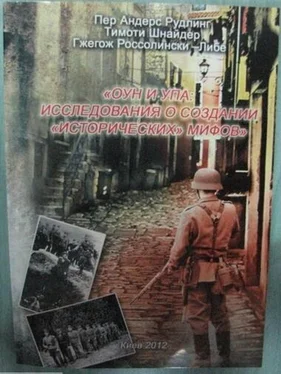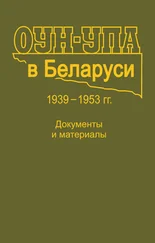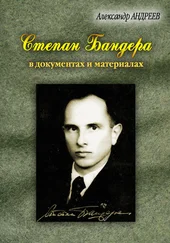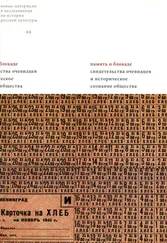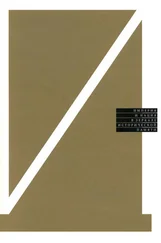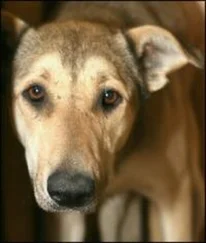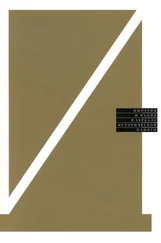Krentsbakh, “Zhivu schche zavdiaky UPA”; “Spohady Stelly Krentsbakh—‘Zhyvu shche zavdlaiky UPA.’ Memoirs of Stella Krenzbach—‘I Am Alive Thanks to the UPA,’” October 25, 2009, on Moisei Fishbein’s blog: http://mosesfishbein.blogspot.com/2009/10/memoirs-of-stella-krenzbachi-am-alive.html (accessed October 25, 2009).
“Ievreika Stella Krentsbakh rozpovila, shcho vyzhyla zavdiaky UPA,” Press-tsentr TsDVR, December 9, 2009: http://upa.in.ua/book/?p=929 (accessed December 15, 2010).
Levytsky, “UPA detractors fan the fl ames of ethnic discord,” 6: Marco Levytsky, “Open letter villifi es freedom fi ghters, minimizes Holodomor,” Kyiv Post, May 6, 2011 http://www.kyivpost.com/news/opinion/op_ed/detail/103827/print/ (Accessed May 10, 2011) Riabchuk also repeats the V’’iatrovych/Fishbein line that “quite a few Jews were rescued by nationalists, and some of them even joined UPA to fi ght both Nazis and Soviets.” “Bandera’s Controversy and Ukraine’s Future.”
Victor Rud, “RE: John Pancake’s UPA Article of January 6, 2010,” Open letter to the Washington Post on behalf of the Ukrainian American Bar Association, January 22, 2010, citing Fishbein, “The Jewish Card in Russian Special Operations Against Ukraine.”
Moses Fishbein, “Listivka UPA ‘Evrei — hromadiany Ukrainy.’ 1950 rik,” December 7, 2009: http://mosesfishbein.blogspot.com/2009/12/1950.html (accessed December 7, 2009).
Kurylo and Himka, “Iak OUN stavylasia do ievreiv?”
This is based upon V’’iatrovych’s most positive estimate, which includes the four named Jews, the Stella Krentsbakh/Kreutzbach forgery and her claim that she worked with twelve Jews in her sanitary unit: twenty-fi ve Jews divided by the low est estimate of about 25,000 UPA insurgents in 1943. V’’iatrovych, Stavlennia OUN, 74–82. In order to provide a perspective here, this handful of Jewish physicians in the UPA should be put in relation to estimates that between 25,000 and 40,000 people served in the UPA in 1943–1944 and that perhaps as many as 300,000 people came through the ranks of the OUN-UPA. Marples, Heroes and Villains, 131–132, 169. The estimates of the number of people organized in the OUN and UPA varies. Stanislav Kul’chyts’kyi estimates that 400,000 people were organized by the OUN-UPA between 1929 and the middle of the 1950s, or 10 percent of the Western Ukrainian population. Stanislav Kul’chyts’kyi, “Polska problematyka w ukrai#skich badaniach historii OUN-UPA,” in Antypolska akcja OUN-UPA, 1943–1944: Fakty i interpretacje (Warsaw, 2003), 137, cited in Bruder, “Den ukrainischen Staat,” 279. German estimates from the end of 1943 put UPA membership at 40,000. Nationalist sources claim 100,000 members, but well-substantiated estimates provide numbers between 30,000 and 40,000 soldiers. John Armstrong, Ukrainian Nationalism, 3d ed. (Englewood, Colo.: Ukrainian Academic Press, 1990), 115.
See, for instance the story of Ludwik Wrodarczyk, a Roman Catholic village priest in Okopy in Volhynia, a rescuer of Jews who in 2000 was designated as Righteous of Nations. The UPA kidnapped and killed him in December 1943. Maria Debowska and Leon Popek, Duchowie" stwo diecezji!uckiej: Ofi ary wojny i represji okupantów, 1939–1945 (Lublin: Polihymnia Wydawnictwo Muzyczne, 2010). In Hanachevka (Hanaczów) in Galicia, the commander of the Polish self-defense, Kazimierz Wojtowicz, assisted dozens of Jews in the village. The Jews of Hanachevka organized a Jewish platoon, fi ghting the UPA together with the local Poles within the ranks of Armja Krajowa. Wojtowicz survived the war and was, together with his two brothers designated as Righteous of Nations. Marples, Heroes and Villains, 206; Jerzy Wigierski, W lwowskiej Armii Krajowej (Warsaw: PAX), ch. 2–7; Motyka, Ukranska partzyantka, 382.
“Sered heroiv novoho romanu Zabuzhko ‘Muzei pokynutykh sekretiv’ kolysgni v’iazni tiurmy ‘na Lontskoho’” Press-tsentr TsDVR, December 24, 2009: http://upa.in.ua/book/?p=981#more-981 (accessed December 27, 2010). Zabuzhko writes that V’’iatrovych’s center provided her with “half a bag full of working material — xero copies, DVDs, photographs and memoirs on the history of the Ukrainian Resistance — the Ukrainian Insurgent Army (UPA).” “Popil Klaasa,” Ofitsiina storinka Oksany Zabuzhko, http://www.zabuzhko.com/ua/critique/ukrhellebosch.html (accessed December 27, 2010).
“L’vivs’ki novyny: Oksana Zabuzhko: ‘Ia ne pysala istorii UPA — ia pysala lav-stori,’” Vysokyi zamok, January 26, 2010: http://news.lvivport.com/content/view/20694/26/ (accessed December 27, 2010).
Only 6 percent of Ukrainians had a “very positive” attitude toward the OUN(b), and 8 percent “basically positive,” whereas 30 percent were “very negative,” and 15 percent “generally negative.” The attitudes to the UPA was similar, with 5 percent very positive, 8 percent generally positive, while 29 percent very negative, and 16 percent generally negative. Signifi cantly, the attitudes within the younger generation did not differ signifi cantly from the older; neither did the attitude within the group of highly educated differ much from the population in general. The exception was Galicia, where 62 percent of those surveyed had a positive attitude to OUN(b), and 59 to UPA. Even in Volhynia only 5 percent of respondents were very positive, and 11 percent generally positive to UPA. Asked about war criminality, 35 percent of respondents thought OUN(b) and UPA were guilty of mass murder of Ukrainians, Jews, and Poles; 6 percent of murdering people from one of these groups. Only 14 percent of respondents thought them innocent of mass murder. Ivan Kachanovs’kyi, “Ukraintsy ne veriat v mify ob OUN i UPA,” Fraza: http://www.fraza.ua/print/14.10.09/76064.html (accessed January 23, 2010).
Asked, “How would you defi ne your country’s relation to the following groups during World War II?” 64 percent of the respondents answered that relations with Ukrainians were bad, a higher number even than Germans (63 percent) and Russians (57 percent). Wojciech Szacki and Marcin Wojciechowski. “Zli Niemcy. +li Ukraincy: To Niemcy byli g"ównymi wrogami Polaków w II wojnie i to oni zadali nam najwi$cej cierpie#. Ale najgorzej wspominamy kontakty z Ukraincami,” Gazeta Wyborcza, August 24, 2009, 4.
The question, “Who was responsible for the crimes committed in Volhynia in 1943?” 14 percent answered “Ukrainians,” while only 5 percent answered “UPA, Ukrainian nationalists, Ukrainian military formations.” A full 19 percent blamed “Russians, the USSR, NKVD. Among them, 1 percent blamed ‘Ukrainians and Russians” and “Ukrainians executing Russian orders”; 1 percent blamed “Germans” and “Ukrainians, on German orders”; 2 percent blamed “Poles and Ukrainians,” “Mutual slaughter,” and “both sides”; 1 percent maintained that “Others were responsible,” or that it was “unclear” who was to blame. By far the largest group, 57 percent, answered “Don’t know, have not heard about it, diffi cult to answer.” Katarzyna Makaruk, “Wo" y# 1943,” Komunikat z bada", Warsaw, July 2008, BS/110/2008, Centrum Badania Opini Spo" ecznej, CBOS, 4: http://www.cbos.pl/SPISKOM.POL/2008/K_110_08.PDF (accessed December 26, 2010).
Andreas Umland, “Die andere Anomalie der Ukraine: ein Parlament ohne rechtsradikale Fraktionen,” Ukraine-Analysen, no. 41 (2008): 7–10.
Читать дальше
